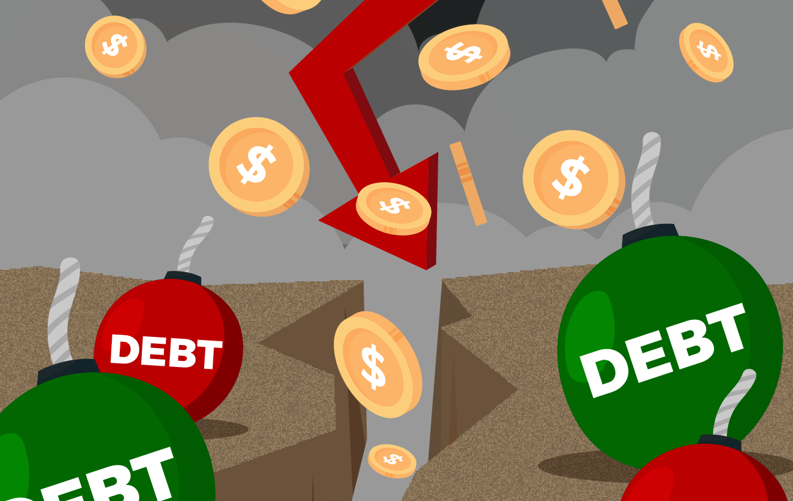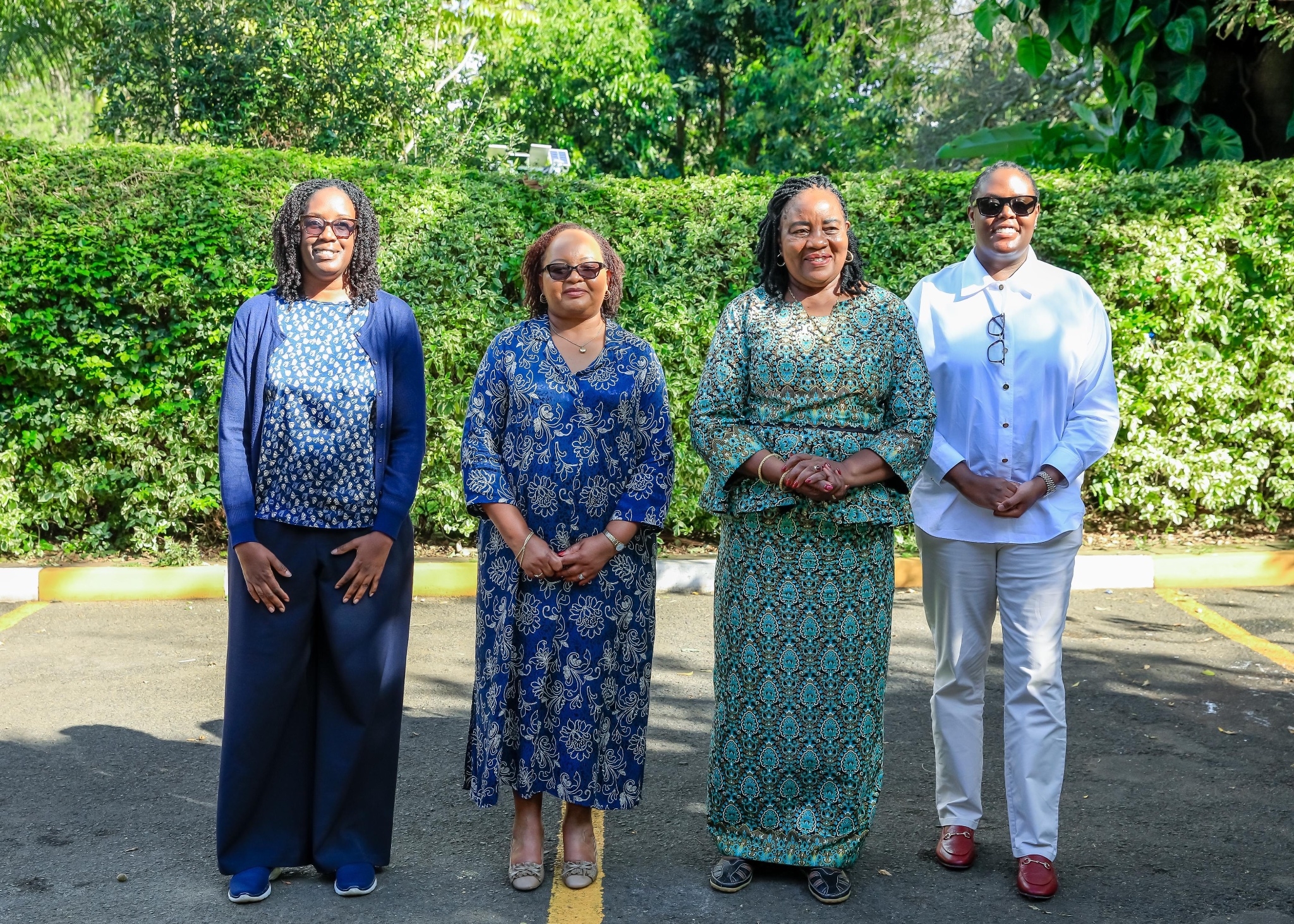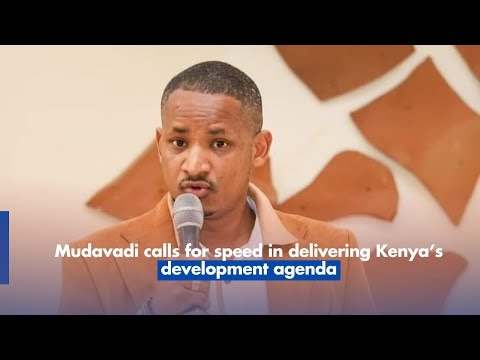

On paper, Kenya’s debt is meant to fuel development and improve lives. In reality, a significant portion of borrowed funds goes toward repaying previous loans, borrowing from Peter to pay Paul, rather than funding essential services that reflect real progress.
With debt servicing costs consuming a large and growing share of government revenue, spending on basic services like healthcare, education, and social protection is under strain, leaving citizens struggling to survive.
The result? Debt intended to advance development is now stalling it. This underscores the growing tension between fiscal policy and human rights: If people can’t afford to eat, can we truly say they have development?
Experts warn that without greater transparency, accountability, and a shift in priorities toward inclusive and sustainable growth, Kenya risks deeper financial distress. Vulnerable populations, many living below the poverty line and dependent on public services, are already bearing the brunt.
“While debt and human rights are inextricably linked, the connection is not part of mainstream understanding,” says Professor Attiya Waris, the UN Independent Expert on Human Rights, Foreign Debt, and International Financial Obligations.
Debt is often left to technical experts, with agreements kept private between the state and lenders. As a result, the public rarely accesses these deals, even though they directly affect access to basic rights.
She explains: “When a government takes on debt, it usually does so to fund infrastructure, such as roads that support freedom of movement or digital systems that enable access to information. Loans are repaid through economic returns or taxes, mainly from citizens' income and spending. If repayment mechanisms aren’t sensitive to inequality, they risk harming the very people the loans were meant to help.
“How debt is repaid matters. Repayment must be designed through a human rights lens so you don’t take from those who have nothing, but instead ensure those with more contribute more,” adds Prof. Waris.
Real-world Impact
For Catherine Ayako, a community nurse at a dispensary in western Kenya, the debt burden isn’t an abstract fiscal challenge; it’s a daily struggle.
“Everything has gotten more expensive, food, fuel, and even school fees for my children in public school. I hear on the news that the government is borrowing more money, and I wonder where it’s all going because things are getting worse,” she says.
Despite working long hours, her salary no longer stretches far. At her dispensary, essential medicines, even basic painkillers like paracetamol, are often out of stock, forcing patients to buy from private pharmacies.
What frustrates her most is the lack of transparency. “We keep hearing about corruption. Are these debts benefiting us, the ordinary citizens?”
She pauses, then adds, “I hope that one day, things will change, and our government will manage finances better so we can all have a chance at a better future.”
Growing Burden
Kenya’s gross public debt stood at KSh 10.9 trillion as of December 2024, 67% of GDP, far above the 55% debt-to-GDP ceiling. While borrowing declined in 2023/2024 to KSh 766.4 billion, this was mainly due to a stronger Kenyan shilling. Still, most external debt is in dollars, exposing the country to exchange rate risk.
Veronica Ndegwa, a senior research analyst at the Institute of Public Finance, explains: “Any depreciation of the shilling against the dollar would raise the debt stock, even without additional borrowing.”
She adds: “In the 2023/2024 financial year, Kenya spent KSh 756 billion on external debt servicing, and KSh 600 billion on domestic interest payments. Combined, this accounts for 28% of the total KSh 2.7 trillion revenue, leaving limited resources for essential services.”
Kenya’s external debt service-to-export ratio exceeded 25% in 2023, far above the IMF’s 15% threshold. The external debt service-to-revenue ratio stood at 17.3%, just below the 18% threshold.
Ndegwa also notes that Kenya’s debt-carrying capacity was downgraded from ‘strong’ to ‘medium’ in 2020 and remains unchanged.
The risk of debt distress rose from ‘moderate’ in 2019 to ‘high’ and remains elevated. Projections for 2024/2025 indicate that Kenya could spend up to 70% of revenue on debt servicing, leaving only 30% for salaries, social services, and counties.
“This raises questions about the government’s commitment to ‘live within its means’. Continued borrowing undermines promises of fiscal prudence,” she says.
Despite frameworks like the Medium-Term Debt Strategy (MTDS) and Annual Borrowing Plan, these are often ignored when revenue targets fall short. “This deviation complicates debt management and makes it harder to regain control,” Ndegwa adds.
Austerity and Human Rights
To manage its growing obligations, Kenya increasingly relies on new loans to repay old ones.
“For example, part of the Eurobond repayment was covered through issuing another bond, only about KSh 500 million was repaid,” says Ndegwa.
This cycle drives up debt servicing costs and crowds out funds for essential services. Counties frequently report delayed disbursements. Meanwhile, IMF benchmarks meant to protect social spending are treated as spending caps rather than minimums.
“If the IMF recommends a minimum of KSh 10 billion, the government allocates just that to meet the benchmark, undermining overall social sector investment,” she says.
High debt also raises borrowing costs. In 2024/2025, Kenya issued domestic debt at rates as high as 17%, crowding out the private sector.
“What we are seeing is the ‘crowding out’ of private investment, where government borrowing makes it harder and more expensive for businesses to access credit,” Ndegwa explains.
Debt also distorts priorities. Between 2019/2020 and 2023/2024, debt servicing costs rose by Sh1.3 trillion, while combined spending on health, education, and social protection increased by just Sh243 billion. A Kenya Human Rights Commission analysis found that Sh60 of every Sh100 in tax revenue now goes to debt repayment.
“In essence, it robs citizens of their basic rights,” Ndegwa says. “When social sector spending is squeezed, public well-being suffers.”
Prof. Waris warns that austerity measures disproportionately hurt vulnerable populations.
A UN analysis of Kenya's 2022/23 budget showed a downward trend in spending on health, education, and social protection since 2019 due to rising debt servicing. In 2025/2026, Global Fund support for HIV, malaria, and TB fell to Sh17.3 billion from Sh28.7 billion. The Social Health Insurance Fund received Sh82.4 billion, yet Kenyans pay Sh150 billion out-of-pocket annually. University tuition has increased, even as incomes stagnate. About 34% of Kenyans live on less than $2.15 a day.
Planning Gaps
According to the World Bank, increasing education spending by 1% of GDP and health by 3%, plus 0.3% for social protection, could greatly reduce vulnerability. Yet while Vision 2030 lays out long-term goals, each election cycle resets priorities, disrupting continuity.
“This has led to short-term planning driven by political ambition,” says Ndegwa.
“Budgets claim to align with Vision 2030, but reflect current government priorities, making it impossible to do a proper cost-benefit analysis.”
She argues for prioritising high-impact sectors. For example, industrial-scale manufacturing could absorb excess labour and stimulate growth. Investments in free primary and secondary education have improved school transition rates, but job creation hasn’t kept pace.
She also points to costly infrastructure like the Standard Gauge Railway (SGR), which cost $5.08 billion but earns just Sh22.4 billion a year, insufficient to cover the loan. Fare hikes in 2023 reduced passenger numbers, yet expansion plans continue without a clear repayment strategy.
“There’s a misalignment between spending and citizens’ needs,” says Ndegwa, citing duplicative roles like that of the Prime Cabinet Secretary. Protesters during the 2024 #RejectFinanceBill demonstrations called for scrapping such positions.
“We must cut non-priority spending and rely more on internal revenue. With Sh1.2 trillion going to interest payments in 2024/2025, balancing the budget will be hard in the short term, but we must begin,” she adds.
Kenya has done it before. Under President Mwai Kibaki (2003–2008), strict fiscal rules reduced public debt from 80% to 39% of GDP. However, this trend reversed after 2013 with large infrastructure projects funded by commercial loans and bonds.
Transparency and Oversight
Ndegwa insists that Kenya’s debt crisis can’t be resolved without transparency. “When there’s controversy over a project, explain it. If a loan funded an incomplete project, tell us where the money went.”
Parliament rarely demands accountability. In 2022, it raised the debt ceiling to Sh10 trillion despite opposition from the Public Debt Management Office. It also approved a fiscal deficit higher than recommended and supported commercial borrowing, including Eurobonds, despite stated preferences for concessional loans.
Parliament approved budgets based on overly optimistic projections. For example, in 2021/2022, revenue dropped during COVID-19, but spending wasn’t adjusted. Promised cuts to non-essential spending, like travel and hospitality, were not enforced.
“The National Treasury must submit quarterly debt reports to Parliament, but I doubt if they’re even reviewed,” says Ndegwa. “If we don’t fix our fiscal policies, debt will keep growing, diverting funds from critical sectors.”
While the government publishes debt reports, they are often late and lacking detail. Kenya scored 55% in the 2023 Open Budget Survey, below the 61% threshold for adequate transparency. “We need more timely and detailed data to engage the public,” she says.
Prof. Waris argues that institutions like the IMF must integrate human rights into their lending practices. “It’s not just about numbers,” she says. Agreements must be public, and governments held accountable.
She also calls for debt relief, citing Germany’s post-WWII example. Several African countries benefited from the HIPC and MDRI initiatives. Uganda saved US$50 million a year after debt relief, funding education and health. Ghana expanded education and cut child mortality. Rwanda doubled health spending and extended insurance coverage to 91%.
“If it worked then, it can work now,” Waris says, urging a shift from rigid debt-to-GDP targets to well-being metrics.
Reimagining Debt Management
Prof. Waris recommends prioritising the poorest. She proposes registering all adults for tax, even those who can’t pay, to build civic inclusion.
Ndegwa calls for a review of tax incentives to foreign investors. “We keep targeting easy revenue but ignore expanding the tax base. Incentives must be reviewed for actual impact.”
Kimani Nyoike, Coordinator of the Finance Inequality Alliance Kenya, urges transparent budgeting, open loan disclosures, and an independent Debt Management Office.
“Public participation must be continuous,” he says. “We need to educate citizens on how debt is acquired.”
“We must use our Constitution and legal mechanisms to challenge any human rights violations resulting from irresponsible debt management,” Kimani adds.
The debt-human rights link poses a major challenge, but also a chance. With transparency, accountability, long-term planning, and people-first policies, Kenya can navigate the crisis without compromising its citizens’ dignity.
Ndegwa notes: “It’s not impossible to balance economic growth with human rights.” For Kenya, that balance is not only achievable, it’s essential.
This article was produced as part of the Aftershocks Data Fellowship (22–23) with support from the Africa Women’s Journalism Project (AWJP) in partnership with The ONE Campaign and the International Center for Journalists (ICFJ).















